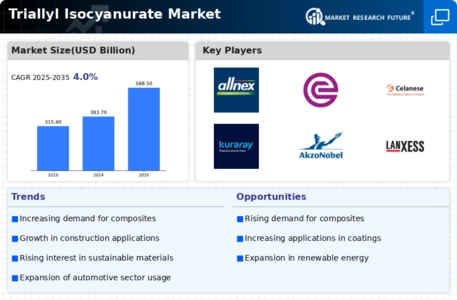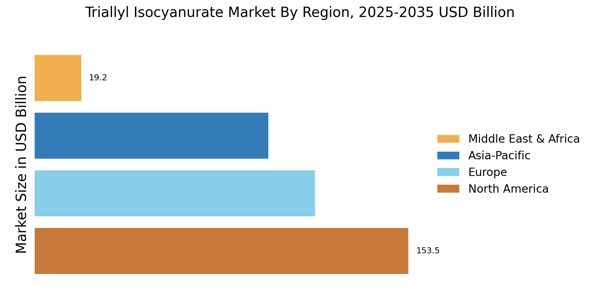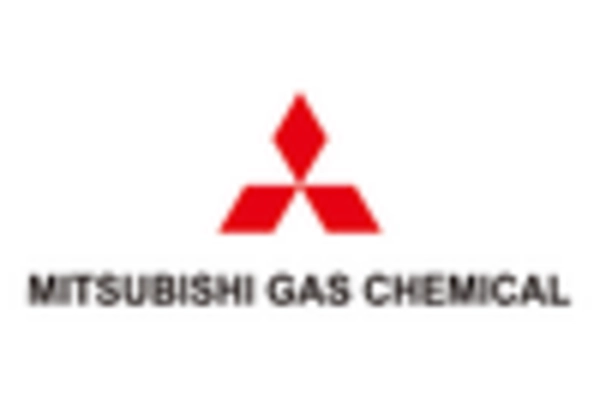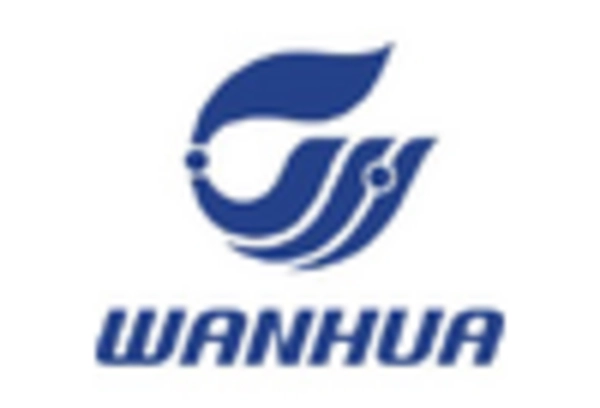Emerging Trends in 3D Printing
The Triallyl Isocyanurate Market is witnessing emerging trends in 3D printing technology, which is creating new opportunities for the use of triallyl isocyanurate. As 3D printing continues to gain traction across various sectors, including healthcare, automotive, and consumer goods, the demand for materials that can withstand high temperatures and provide structural integrity is increasing. Triallyl isocyanurate, with its unique properties, is well-suited for use in 3D printing applications. The market for 3D printing materials is expected to grow significantly, potentially at a rate of 20% annually, which could lead to a substantial increase in the consumption of triallyl isocyanurate in the near future.
Growth in the Electronics Sector
The Triallyl Isocyanurate Market is poised for growth, particularly due to the rising demand from the electronics sector. Triallyl isocyanurate is increasingly used in the production of electronic components, including circuit boards and insulators, owing to its excellent electrical properties and thermal resistance. As the electronics industry continues to evolve, with advancements in technology and an increase in consumer electronics, the need for high-performance materials like triallyl isocyanurate is likely to rise. Market data indicates that the electronics sector is projected to witness a growth rate of approximately 6% annually, which could significantly impact the triallyl isocyanurate market positively.
Regulatory Support for Advanced Materials
The Triallyl Isocyanurate Market benefits from regulatory support aimed at promoting advanced materials. Governments and regulatory bodies are increasingly recognizing the importance of innovative materials in enhancing product performance and sustainability. This support often translates into funding for research and development, as well as incentives for companies that adopt advanced materials in their manufacturing processes. As a result, the triallyl isocyanurate market is likely to see increased investment and innovation, fostering a more competitive landscape. The regulatory environment is expected to remain favorable, encouraging the adoption of triallyl isocyanurate across various industries, thus driving market growth.
Rising Demand for High-Performance Coatings
The Triallyl Isocyanurate Market is significantly influenced by the rising demand for high-performance coatings. These coatings are essential in various applications, including automotive, industrial, and architectural sectors, where durability and resistance to environmental factors are paramount. Triallyl isocyanurate serves as a key ingredient in formulating these coatings, providing enhanced properties such as chemical resistance and thermal stability. Market analysis indicates that the coatings industry is projected to grow at a rate of around 4% annually, which is likely to bolster the demand for triallyl isocyanurate as manufacturers seek to meet the evolving needs of their customers.
Increasing Applications in Composite Materials
The Triallyl Isocyanurate Market is experiencing a notable surge in demand due to its increasing applications in composite materials. This compound is utilized in the production of high-performance composites, which are essential in various sectors such as aerospace, automotive, and construction. The versatility of triallyl isocyanurate allows for enhanced mechanical properties and thermal stability, making it a preferred choice among manufacturers. As industries continue to seek lightweight and durable materials, the market for triallyl isocyanurate is projected to expand. Recent estimates suggest that the composite materials sector is expected to grow at a compound annual growth rate of over 5% in the coming years, further driving the demand for triallyl isocyanurate in the market.


















Leave a Comment